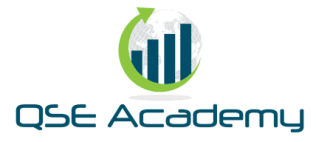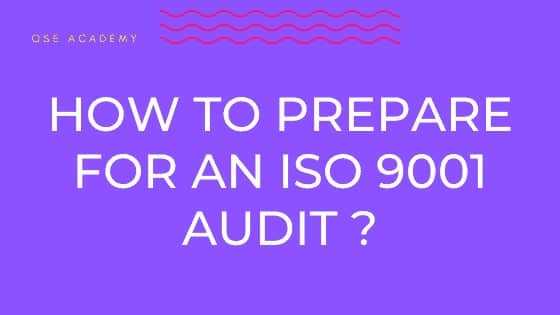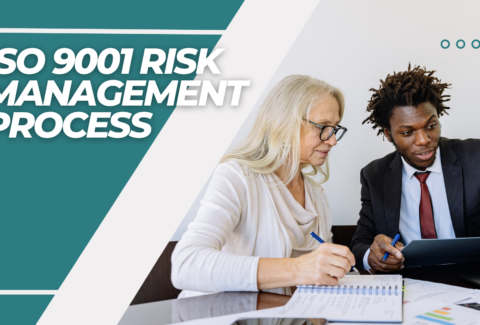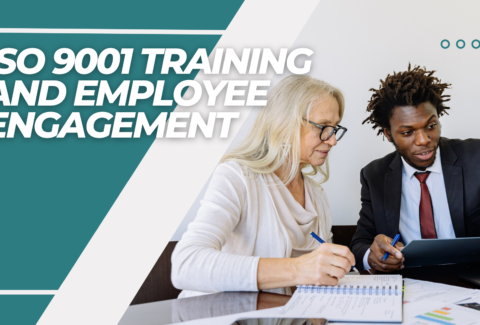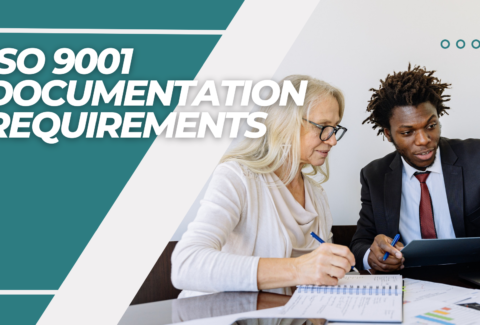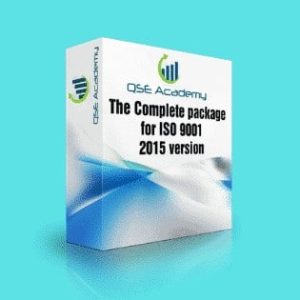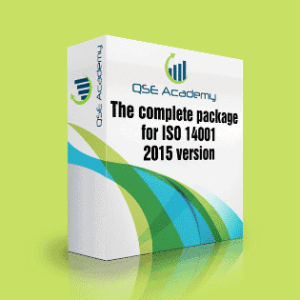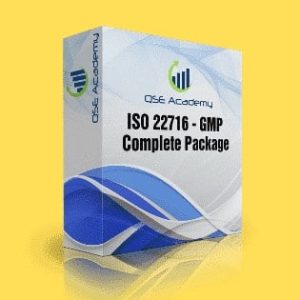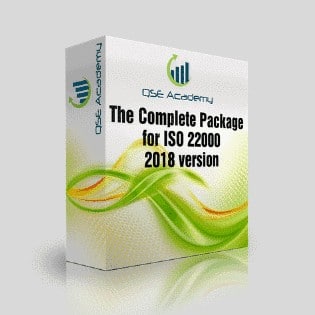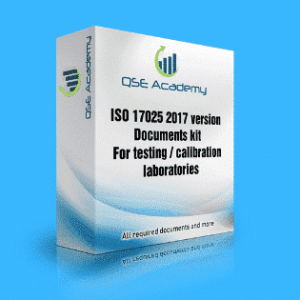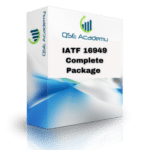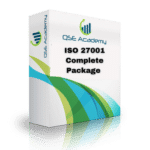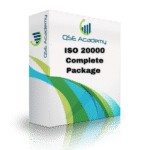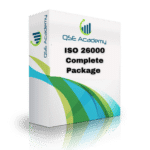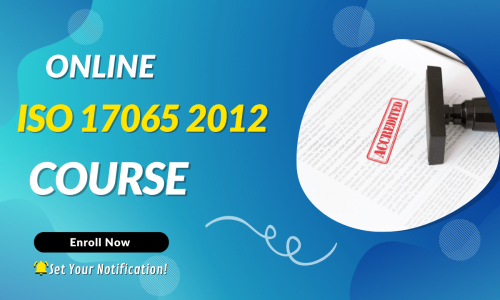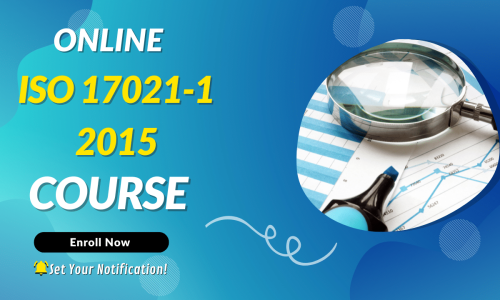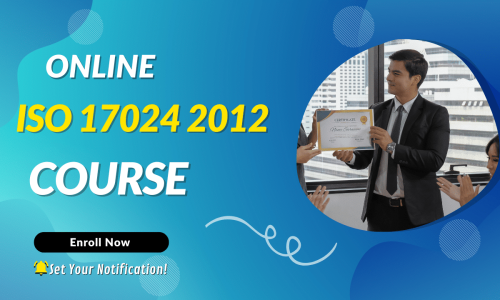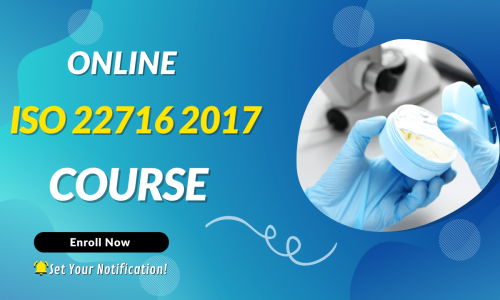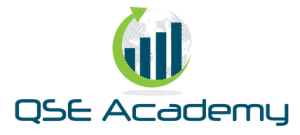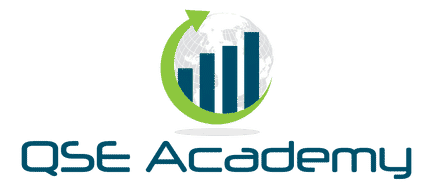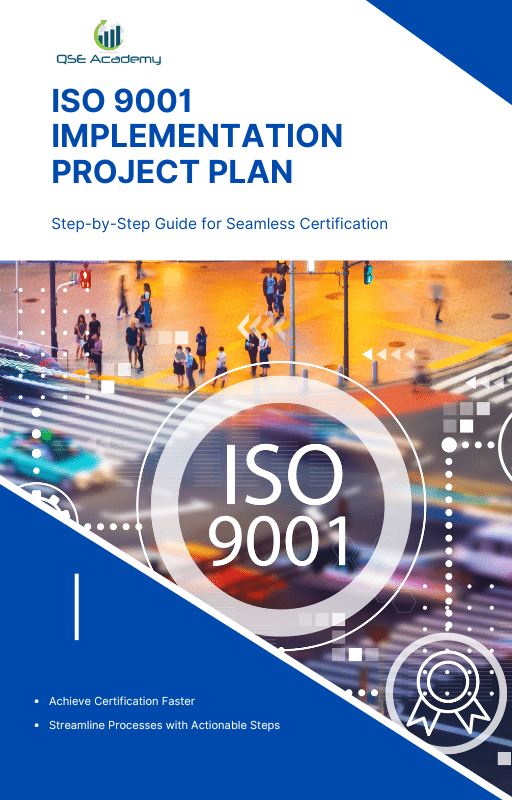How to prepare for an ISO 9001 audit ?
How to prepare for an ISO 9001 audit ?
Preparing for an audit can feel a bit nerve-wracking, right? Especially when it comes to something as important as ISO 9001 certification. But here’s the good news: with the right approach, you can turn what might seem like a daunting task into a smooth, structured process. The key is knowing how to properly prepare for an ISO 9001 audit so you can walk into it confidently and with everything in place.
So, what exactly is an ISO 9001 audit? In simple terms, it’s a formal check to ensure your organization’s quality management system (QMS) meets the requirements of the ISO 9001:2015 standard. Audits are designed to verify that your processes align with best practices, helping you demonstrate your commitment to quality and continuous improvement. Whether you’re preparing for a certification audit or a routine surveillance audit, a little preparation can go a long way.
In this guide, we’ll break down the steps you need to take to prepare for an ISO 9001 audit—from organizing your documents to training your team and everything in between. With these tips, you’ll not only meet the requirements but also use the audit as a chance to strengthen your systems and improve your business. Ready to dive in? Let’s get started!
Understanding the ISO 9001 Audit Process
Before diving into how to prepare for an ISO 9001 audit, it’s helpful to understand what the process actually involves. Knowing what to expect can take a lot of the stress out of the equation and give you a clear roadmap to follow. Don’t worry—it’s not as complicated as it might seem!
Types of ISO 9001 Audits
There are a few different types of audits you might encounter, and each serves a unique purpose:
- Internal Audits: These are conducted by your own team (or an internal auditor) to ensure your processes meet the ISO 9001 requirements. Think of it as a practice run before the big day.
- External Audits: These are carried out by a third party, such as a certification body, to verify your compliance. They may also include surveillance audits to ensure continued compliance over time.
- Certification Audits: This is the big one! A certification audit is performed by an external auditor to determine whether your organization is ready to be ISO 9001 certified.
Knowing which type of audit you’re preparing for can help you tailor your approach and focus on the most relevant areas.
What Auditors Look For
When you’re getting ready to prepare for an ISO 9001 audit, it’s important to understand what auditors will be evaluating. They’re not there to catch you off guard—they’re there to ensure your quality management system (QMS) is effective and compliant with ISO 9001:2015 standards.
Here are the main things they’ll focus on:
- Documentation: Are your policies, procedures, and records up-to-date and aligned with ISO 9001 requirements?
- Process Alignment: Do your actual practices match what’s written in your documentation?
- Continuous Improvement: Are you actively identifying and addressing areas for improvement in your QMS?
- Employee Awareness: Do your team members understand their roles within the QMS and how they contribute to meeting quality objectives?
Auditors want to see that your organization is not only compliant but also committed to maintaining and improving quality over time.
The Role of Auditors
It’s easy to think of auditors as critics, but their role is more collaborative than you might expect. Auditors are there to assess your processes objectively and provide feedback that helps you grow.
When you’re preparing for an ISO 9001 audit, it’s helpful to see auditors as partners in your quality journey. They’ll highlight what you’re doing well and identify opportunities for improvement, giving you valuable insights to strengthen your organization.
Why This Matters
Understanding the ISO 9001 audit process is a critical first step in preparing for success. When you know what to expect, you can plan ahead, address potential gaps, and approach the audit with confidence. By focusing on the key areas auditors care about, you’ll set your organization up for a smoother, more productive experience.
Next, we’ll dive into why preparation is so important and how it can make your audit process easier, faster, and more effective. Let’s keep going!
Why Preparation Is Key to a Successful ISO 9001 Audit
So, why is preparation such a big deal when it comes to audits? If you’ve ever crammed for an exam at the last minute, you know how stressful and chaotic it can be. The same goes for audits. Taking the time to properly prepare for an ISO 9001 audit can make the entire process smoother, less stressful, and, dare I say, even rewarding.
Let’s talk about why preparation is so important and what it means for your organization.
1. Reducing Stress and Uncertainty
Let’s be honest: the thought of an audit can feel overwhelming, especially if you’re unsure of what to expect. But when you prepare for an ISO 9001 audit, you’re taking control of the process. By reviewing your systems, organizing your documentation, and training your team ahead of time, you’ll eliminate much of the guesswork.
Preparation helps you feel confident, knowing that everything is in place and ready for the auditor’s review. It’s like walking into a meeting with all your notes neatly organized—you’re ready to shine.
2. Demonstrating Your Commitment to Quality
An audit isn’t just about ticking boxes—it’s about showing that your organization takes quality seriously. When you invest the time and effort to prepare for an ISO 9001 audit, it sends a clear message to auditors (and your stakeholders) that you’re fully committed to maintaining high standards.
For example, having well-documented processes, clear employee roles, and evidence of continuous improvement doesn’t just satisfy ISO 9001 requirements—it showcases your dedication to doing things the right way.
3. Avoiding Non-Conformities
Non-conformities are areas where your organization doesn’t meet ISO 9001 standards, and they can slow down your certification process. While they’re not the end of the world, they’re definitely something you want to avoid.
When you take the time to prepare for an ISO 9001 audit, you’re more likely to catch potential issues before the auditor does. Whether it’s updating a missing document, improving a process, or training an employee, preparation gives you the chance to fix things in advance.
4. Building Confidence Across Your Team
A well-prepared team is a confident team. When your employees know what to expect during the audit and understand their roles in the quality management system (QMS), they’re more likely to perform well.
Preparation could mean running mock audits, holding team meetings to discuss ISO 9001 requirements, or simply making sure everyone understands what an auditor might ask. By taking these steps, you’ll build a sense of readiness and reduce the nerves that can come with being audited.
5. Turning the Audit into a Growth Opportunity
Here’s a little mindset shift: instead of seeing the audit as a stressful hurdle, think of it as a chance to improve. Proper preparation allows you to approach the audit with a growth-oriented perspective.
When you’re ready for the auditor’s feedback, you can use their insights to refine your systems, strengthen weak areas, and take your QMS to the next level. Preparation isn’t just about passing—it’s about growing and getting better.
Why It Matters
In a nutshell, preparation is the secret sauce to a successful audit. By taking the time to prepare for an ISO 9001 audit, you’ll reduce stress, avoid surprises, and show that your organization is serious about quality. Plus, you’ll turn the audit into an opportunity to learn, grow, and improve.
Next, we’ll dive into the actionable steps you can take to prepare effectively, from organizing your documentation to training your team. Let’s roll up our sleeves and get to work!
Step-by-Step Guide to Prepare for an ISO 9001 Audit
Okay, now that we know why preparation is so important, let’s get into the nitty-gritty of how to actually prepare for an ISO 9001 audit. Don’t worry—it’s not as complicated as it might sound. With a clear plan and some proactive steps, you’ll feel confident and ready when audit day rolls around. Here’s a step-by-step guide to help you get started.
Step 1: Understand the Scope of the Audit
The first step in preparing for an ISO 9001 audit is knowing exactly what’s going to be audited. Ask yourself:
- Which processes, departments, or locations will the audit cover?
- What specific ISO 9001 requirements apply to these areas?
By understanding the scope, you can focus your preparation efforts where they’re needed most. For example, if the audit will examine your production processes, make sure those areas are in tip-top shape and fully compliant.
Step 2: Conduct a Gap Analysis
Before you dive into the details, it’s a good idea to take a step back and evaluate where you currently stand. A gap analysis involves comparing your existing quality management system (QMS) against the requirements of ISO 9001:2015 to identify areas that need improvement.
Once you’ve pinpointed the gaps, create an action plan to address them. This might involve updating your procedures, training employees, or improving how you document your processes. Conducting a thorough gap analysis is one of the most effective ways to prepare for an ISO 9001 audit.
Step 3: Organize Your Documentation
Documentation is a big part of any ISO 9001 audit. Auditors will want to see evidence that your processes are defined, followed, and effective. Take some time to review your QMS documentation, including:
- Quality manuals
- Policies and procedures
- Process flowcharts
- Work instructions
- Records of corrective actions and continuous improvement
Make sure everything is up-to-date, easy to access, and aligned with ISO 9001 requirements. A well-organized set of documents will not only impress your auditor but also make the entire process run more smoothly.
Step 4: Train Your Team
Your team plays a critical role in ensuring the success of the audit, so don’t forget to prepare them as well. This means making sure everyone understands:
- The basics of ISO 9001 and its requirements.
- Their specific roles and responsibilities within the QMS.
- How to confidently answer auditor questions.
Consider running a mock audit or holding a team meeting to walk through what to expect. When your employees feel prepared, they’ll approach the audit with confidence—and that makes a big difference.
Step 5: Conduct Internal Audits
Internal audits are like your dress rehearsal for the big event. Schedule and conduct thorough internal audits to evaluate your QMS and identify any potential issues before the official audit.
Use the findings from your internal audits to make improvements and address non-conformities. This proactive approach will help you prepare for an ISO 9001 audit and ensure there are no surprises on audit day.
Step 6: Prepare for the Audit Day
As audit day approaches, it’s time to tie up any loose ends. Share the audit schedule with your team so everyone knows what to expect and when. Assign a point of contact to liaise with the auditor and ensure everything runs smoothly.
It’s also a good idea to remind your employees to be honest and transparent during the audit. If they don’t know the answer to a question, that’s okay—it’s better to admit that and find the answer together than to guess.
Step 7: Establish a Communication Plan
Communication is key during an audit, so make sure you have a plan in place. This might include:
- Assigning someone to provide updates to leadership throughout the audit.
- Creating a process for addressing any issues or questions raised by the auditor.
- Ensuring your team knows who to go to if they need support during the audit.
A solid communication plan will keep everyone on the same page and help the audit run more smoothly.
Putting It All Together
By following these steps, you’ll be well on your way to successfully preparing for an ISO 9001 audit. From understanding the scope to organizing documentation and training your team, every effort you make now will pay off when audit day arrives.
In the next section, we’ll talk about common mistakes to avoid so you can stay on track and set your organization up for success. Let’s keep going!
Common Mistakes to Avoid When Preparing for an ISO 9001 Audit
Even with the best intentions, it’s easy to make mistakes when you’re trying to prepare for an ISO 9001 audit. Some of these missteps might seem minor at first but could cause unnecessary headaches or delays during the audit process. The good news? With a little awareness, these common mistakes are entirely avoidable. Let’s dive into the most frequent pitfalls and how to steer clear of them.
1. Overlooking Documentation Updates
One of the biggest mistakes organizations make is neglecting to keep their documentation up to date. ISO 9001 places a strong emphasis on having clear and accurate records, so outdated or incomplete documents can quickly raise red flags with auditors.
How to Avoid It:
Set aside dedicated time to review your documentation well in advance. This includes your quality manual, procedures, policies, and any records that demonstrate compliance. Ensure they reflect your current processes and are easily accessible during the audit.
2. Skipping Internal Audits
Think of internal audits as your dress rehearsal—they’re your chance to catch and fix issues before the official audit. Skipping this step is like showing up to an exam without studying.
How to Avoid It:
Conduct regular internal audits as part of your preparation. Use them to identify gaps in your quality management system (QMS) and address non-conformities ahead of time. This proactive approach can make a huge difference when you’re preparing for an ISO 9001 audit.
3. Not Involving Your Team
Preparing for an ISO 9001 audit isn’t a one-person job. A common mistake is failing to engage employees or ensure they understand their roles in the QMS. If your team isn’t prepared, it could lead to confusion or inconsistencies during the audit.
How to Avoid It:
Involve your team early and often. Provide training to help them understand ISO 9001 requirements and their responsibilities. Consider holding mock interviews or Q&A sessions to build their confidence in answering auditor questions.
4. Ignoring Minor Non-Conformities
It’s tempting to focus only on the big-ticket items, but minor non-conformities can add up and paint a less-than-ideal picture of your QMS. Auditors are trained to notice these small details, so it’s important to address them.
How to Avoid It:
Treat every non-conformity—big or small—as an opportunity to improve. Use your internal audits to identify and resolve these issues before the official audit. Consistency and attention to detail are key when you prepare for an ISO 9001 audit.
5. Failing to Communicate the Audit Plan
Another common mistake is not sharing the audit plan with your team. If employees don’t know what’s happening, when it’s happening, or what’s expected of them, it can lead to unnecessary stress and confusion on audit day.
How to Avoid It:
Develop a clear audit schedule and share it with everyone involved. Make sure your team knows what areas will be audited, who the key points of contact are, and how they can prepare. Clear communication can go a long way toward ensuring a smooth audit process.
6. Being Dishonest or Overly Defensive
Auditors aren’t there to “catch” you—they’re there to evaluate your QMS and provide feedback. Trying to hide issues or being overly defensive can create unnecessary tension and may even raise concerns.
How to Avoid It:
Be honest and transparent during the audit. If there are areas where you’re still improving, acknowledge them and explain the steps you’re taking to address them. Auditors appreciate honesty and a commitment to continuous improvement.
Why Avoiding These Mistakes Matters
When you take the time to avoid these common pitfalls, you’re setting your organization up for success. Proper preparation not only ensures compliance but also makes the audit process smoother, faster, and far less stressful. By addressing these areas proactively, you’ll walk into your audit with confidence and show your commitment to quality management.
Up next, we’ll share some practical tips for ensuring audit day goes off without a hitch. Let’s keep building on this momentum!
Tips for a Smooth ISO 9001 Audit Day
Alright, you’ve done the prep work, your team is ready, and audit day is finally here! But how do you make sure everything goes as smoothly as possible? The key is staying organized, focused, and prepared to showcase your quality management system (QMS) in the best possible light. Let’s dive into some practical tips to help you confidently navigate audit day and successfully prepare for an ISO 9001 audit.
1. Keep Your Workspace Organized and Audit-Ready
First impressions matter, and a tidy, well-organized workspace goes a long way in setting the tone for a smooth audit. A cluttered environment can send the wrong message, making it seem like your processes are as messy as your desk (even if they’re not).
What to Do:
- Ensure all relevant documents are easy to access, whether they’re physical or digital.
- Organize workspaces to reflect the efficiency of your processes.
- Keep tools, materials, and records in designated locations to make it easy for auditors to see your QMS in action.
2. Be Honest and Transparent
Auditors aren’t looking for perfection—they’re looking for compliance and a commitment to improvement. If you try to hide issues or present an overly polished version of your QMS, it can come across as defensive or even dishonest.
What to Do:
- If there’s an area that needs improvement, acknowledge it and explain the steps you’re taking to address it.
- Answer auditor questions clearly and honestly. If you’re unsure about something, don’t guess—offer to find the correct information instead.
- Transparency demonstrates that you take your QMS seriously and are committed to continuous improvement.
3. Communicate the Audit Schedule to Your Team
Your employees play a key role in the audit, so it’s essential that everyone knows what to expect. Surprises or confusion can create unnecessary stress, so clear communication is your best friend here.
What to Do:
- Share the audit schedule with all relevant team members ahead of time.
- Let employees know which areas or processes the auditor will be focusing on.
- Encourage team members to be prepared for questions about their roles in the QMS.
4. Assign a Point of Contact for the Auditor
Having a designated point of contact (POC) ensures that the auditor has someone to turn to with questions, requests, or feedback throughout the day. This keeps the process organized and minimizes interruptions for the rest of your team.
What to Do:
- Choose someone who is knowledgeable about your QMS and comfortable interacting with the auditor.
- Make sure the POC is available throughout the audit to provide information, access records, and address any concerns.
5. Be Ready to Demonstrate Processes in Action
Auditors often want to see your QMS in action, not just on paper. This means you’ll need to be prepared to walk them through key processes and show how they align with ISO 9001 requirements.
What to Do:
- Identify processes the auditor is likely to review and make sure they’re running smoothly.
- Have process owners or team leads ready to explain their roles and how their activities contribute to quality objectives.
- Be prepared to show real-time examples of records, controls, or outputs related to those processes.
6. Stay Calm and Professional
Even with the best preparation, unexpected questions or minor hiccups can happen. The key is to stay calm and approach these moments with professionalism. Auditors understand that no system is perfect, and how you handle challenges says a lot about your organization.
What to Do:
- If an issue arises, address it calmly and provide a solution if possible.
- Encourage your team to stay confident and relaxed, reminding them that the audit is a collaborative process.
- Remember, preparation is your safety net—trust in the work you’ve done to get ready.
A Final Note on Audit Day Success
Audit day doesn’t have to be stressful. By taking the time to properly prepare for an ISO 9001 audit, staying organized, and communicating clearly with your team and the auditor, you’ll set yourself up for a successful outcome.
Next, we’ll talk about what to do after the audit is complete, including reviewing findings and planning your next steps for continuous improvement. Let’s wrap this up strong!
Post-Audit Steps to Take
Congratulations! You’ve successfully navigated audit day. But just because the audit is over doesn’t mean the work is done. The post-audit phase is just as important as your preparation—it’s your chance to review findings, address any gaps, and keep building on what you’ve achieved. Whether it’s your first audit or a routine one, these steps will help you make the most of your efforts to prepare for an ISO 9001 audit.
1. Review the Audit Findings
Once the audit is complete, the auditor will provide a report summarizing their findings. This is your roadmap for moving forward, so take the time to review it carefully.
What to Look For:
- Strengths: Celebrate the areas where your QMS is performing well. It’s important to acknowledge the hard work your team put in!
- Non-Conformities: If the auditor identified any areas that don’t fully comply with ISO 9001 requirements, don’t panic. These are opportunities to improve.
- Opportunities for Improvement: Auditors often provide suggestions for how you can enhance your processes further. Use these as valuable insights to make your QMS even stronger.
By thoroughly reviewing the findings, you’ll have a clear picture of where your QMS stands and what steps to take next.
2. Address Non-Conformities Promptly
If your audit revealed any non-conformities, it’s important to act on them quickly. Ignoring or delaying corrective actions can impact your certification or future audits.
What to Do:
- Develop a corrective action plan that outlines how you’ll address each non-conformity.
- Assign responsibilities and set realistic deadlines for completing the required actions.
- Document your actions and outcomes—this is essential for demonstrating your commitment to improvement when preparing for future ISO 9001 audits.
Remember, non-conformities aren’t failures; they’re opportunities to refine your processes and strengthen your QMS.
3. Celebrate Your Successes
It’s easy to focus solely on areas for improvement, but don’t forget to celebrate the wins! Successfully completing an ISO 9001 audit is no small feat, and it’s a testament to your organization’s dedication to quality.
Ideas to Celebrate:
- Share the results with your team and acknowledge their hard work.
- Highlight specific achievements, like strong compliance in certain areas or positive auditor feedback.
- Use the success as motivation to keep improving and aiming higher.
Taking time to celebrate boosts morale and reinforces the value of your QMS efforts.
4. Plan for Continuous Improvement
ISO 9001 isn’t a “set it and forget it” standard—it’s about continuous improvement. Use what you’ve learned during the audit to refine your processes and keep moving forward.
How to Do It:
- Review the auditor’s suggestions for improvement and integrate them into your QMS.
- Schedule regular internal audits to stay ahead of potential issues and maintain compliance.
- Encourage your team to provide ongoing feedback on how processes can be improved.
Continuous improvement ensures that your QMS evolves alongside your organization, keeping you ready to prepare for an ISO 9001 audit anytime.
5. Prepare for the Next Audit
Yes, there will be more audits in the future! Whether it’s a surveillance audit, a recertification audit, or another internal review, staying proactive will make the process easier next time around.
What to Do:
- Maintain your documentation and keep it up to date.
- Schedule regular QMS training sessions to keep employees engaged and informed.
- Use lessons learned from this audit to fine-tune your preparation process for the next one.
By staying prepared year-round, you’ll build confidence and make future audits a breeze.
Wrapping It Up
The post-audit phase is your chance to reflect, learn, and grow. By reviewing the findings, addressing gaps, and planning for the future, you’ll strengthen your QMS and set yourself up for success. Remember, every audit is an opportunity—not just to comply with standards, but to make your organization better.
Next time you prepare for an ISO 9001 audit, you’ll have even more experience and insights to guide you. Until then, celebrate your progress and keep moving forward. You’ve got this!
Conclusion: Your Guide to Successfully Preparing for an ISO 9001 Audit
So, there you have it—a complete roadmap to help you confidently prepare for an ISO 9001 audit. Whether it’s your first audit or one of many, the process doesn’t have to be overwhelming. With the right preparation, a clear plan, and a focus on continuous improvement, you can turn your audit into a valuable experience for your organization.
Why Preparation Matters
Taking the time to properly prepare for an ISO 9001 audit isn’t just about ticking boxes—it’s about showcasing your commitment to quality. From organizing your documentation to training your team, every step you take ensures that your quality management system (QMS) is operating at its best. Not only does this help you meet ISO 9001 requirements, but it also strengthens your organization as a whole.
Key Takeaways
Let’s recap some of the essential steps:
- Understand the scope of the audit and know what auditors are looking for.
- Conduct a gap analysis to identify and address potential issues.
- Keep your documentation organized and up to date.
- Train your team to understand their roles and how they contribute to the QMS.
- Use internal audits to catch and resolve problems early.
- Stay calm and professional on audit day, and be transparent with the auditors.
- After the audit, review the findings, take corrective actions, and plan for the future.
By following these steps, you’ll set your organization up for success not only in the audit but also in maintaining a culture of quality and continuous improvement.
A Final Word of Encouragement
Remember, an ISO 9001 audit isn’t just about compliance—it’s an opportunity to learn, grow, and improve. It’s a chance to reflect on your processes, celebrate what’s working, and refine what isn’t. Every audit brings new insights that help your organization move closer to its quality goals.
When you prepare for an ISO 9001 audit with care and intention, you’re not just preparing for a one-time event—you’re building a stronger, more resilient business. So take it step by step, involve your team, and trust in the work you’ve put in. You’ve got this!
Ready to start your audit prep? Let’s get to it—you’re well on your way to success!
Looking for More Resources on ISO 9001?
Looking for ISO 9001 Resources Tailored to Your Industry?
If this article helped clarify ISO 9001, take the next step with our industry-focused tools designed to simplify your certification journey:
📦 ISO 9001 Documentation Kits by Industry: Whether you’re in manufacturing, construction, consulting, or healthcare — we have complete, ready-to-use documentation tailored for your sector.
🎓 Online ISO 9001 Training: Learn how to implement ISO 9001 effectively with our easy-to-follow video lessons, real-world examples, and practical exercises.
📋 ISO 9001 Checklist: Download our step-by-step checklist to ensure your QMS meets all the 9001:2015 requirements from start to finish.
These resources are crafted to save you time, reduce stress, and help you achieve certification with confidence. Choose your industry and start now!

make ISO standards less intimidating and more approachable for everyone.
Whether it’s ISO 9001, ISO 22000, or the cosmetics-focused ISO 22716,
I’ve spent my career turning complex jargon into clear, actionable steps
that businesses can actually use. I’m not here to call myself an expert—I prefer “enthusiast” because I truly love what I do.
There’s something incredibly rewarding about helping people navigate food safety and quality management systems
in a way that feels simple, practical, and even enjoyable.
When I’m not writing about standards, you’ll probably find me playing Piano 🎹, connecting with people, or diving into my next big project💫.
- I’m an engineer specialized in the food and agricultural industry
- I have a Master’s in QHSE management and over 12 years of experience as a Quality Manager
- I’ve helped more than 15 companies implement ISO 9001, ISO 22000, ISO 22716, GMP, and other standards
- My clients include food producers, cosmetics manufacturers, laboratories, and service companies
- I believe quality systems should be simple, useful, and efficient
- Outside of work, I play piano and love learning something new every day
Let’s make ISO less about stress and more about success! 🙏
